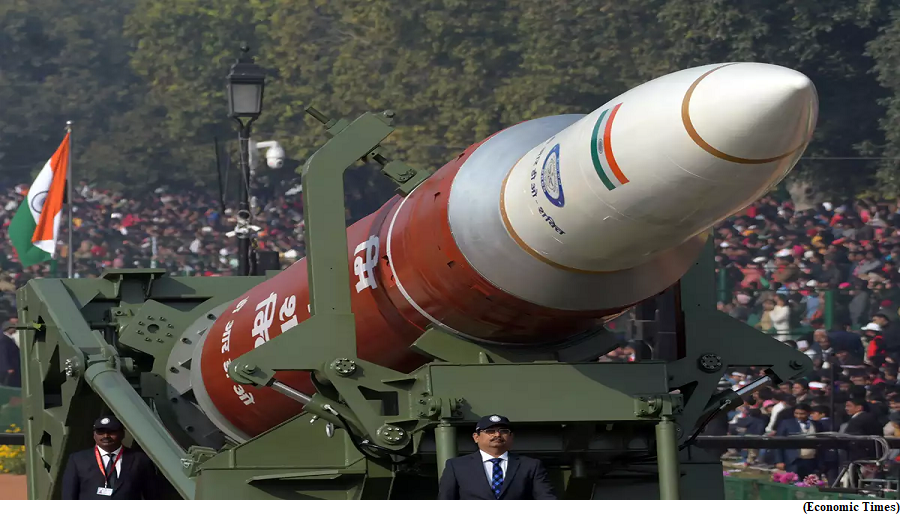The changing contours of India’s defence policy (GS Paper 3, Defence)

Context:
- In 2022, Indian defence policy has witnessed some important developments.
Four major and identifiable shifts have gained momentum:
- Being the changes made to the nature of India’s acquisitions;
- A greater emphasis on domestic manufacturing;
- The linkage between acquisitions from abroad and the Transfer of Technology (ToT) to Indian defence manufacturing entities and Research and Development (R&D) institutions; and
- India is emerging as a net security provider through defence exports.
Changes in Defence Acquisition Procedure (DAP):
- The Ministry of Defence (MoD) in April 2022 announced, as part of changes in the Defence Acquisition Procedure (DAP), that in the future, all acquisitions of equipment made by the three Indian armed services and the Indian Coast Guard (ICG) will have to be sourced from domestic industry.
- The MoD emphatically stated that procurement of foreign military equipment to meet the needs of the services and the ICG had to be an exception and not the norm.
- Further, acquisitions from overseas by the three services and the ICG now require the prior approval of the Defence Acquisition Council (DAC). The purpose is to reduce military hardware acquisitions from foreign vendors.
- This policy drive to source from domestic industry is an integral part of the Atma Nirbhar Bharat Initiative (ANBI) announced by the Modi government in late May 2020.
Domestic manufacturing:
- As corollary to this shift, the MoD’s defence policy has emphasised on strengthening the domestic defence industry by substituting foreign hardware with native content.
- This policy shift towards greater indigenisation is also a product of the government’s Innovations for Defence Excellence (iDEX), which is an endeavour geared towards leveraging India’s start-up talent and the strength of Micro, Small, Medium Scale Enterprises (MSMEs).
- In addition, India’s premier Defence Research and Development Organisation (DRDO) is also sharing technology with Indian industry at a “nominal cost” and helping the industry secure cost-free access to its patents.
- Critically, supplementing this effort towards greater defence self-reliance, the MoD has released a succession of Positive Indigenisation Lists (PILs) of defence items.
- The latest is the fourth indigenisation list that requires the Defence Public Sector Undertakings (DPSUs) to source 928 strategically vital “Line Replacement Units (LRUs) spares and components, military subsystems and high-end materials” exclusively from domestic industry.
- The indigenisation lists are also aimed at creating a “level playing field” between domestic public and private sector defence enterprises bidding for military contracts.
Sharing of technology:
- Supporting the push for enhanced domestic defence manufacturing has been a recalibration of India’s defence dealings with other countries.
- The recent memorandum of understanding (MoU) between Hindustan Aeronautics Limited (HAL) and GE Aerospace for the F414 fighter jet engine is extremely consequential for transfer of technology.
- The MoU includes provisions for joint production of the F414 engine between HAL and GE for India’s Light Combat Aircraft MK II programme.
- In the long run, this will enable the country’s defence industrial base to leverage scientific knowledge sharing and build its own indigenous fighter jet engines. Thus, propelling the country’s defence manufacturing capacity and possibly its fighter squadron strength.
- While India’s defence offset policy has mandated 30 percent of contracts with foreign contractors to be spent in the country to boost its defence industry, it has been met with mixed results over the years.
- However, India’s recent defence dealings reflect a positive reorientation and implementation of this policy.
- Specifically, the Indian Air Force’s deal to purchase 56 Airbus C-295 transport aircraft involves 40 to be manufactured in India with Tata Advanced Systems Limited. Airbus has described the scale of manufacturing for the C-295s in India as “unprecedented”.
Defence exports:
- The institutional focus on domestic defence manufacturing has also manifested itself in India’s rising defence export trajectory.
- The Union Government initiated a defence export strategy in 2014; licensing and certification norms for defence manufacturing and exporting were liberalised.
- Further, positive indigenisation lists that mandate specific military equipment to be procured locally instead of externally, coupled with the new Defence Acquisition Procedure, have enabled this rise in exports.
- Countries such as the Philippines, Armenia, and Ecuador have been the recipients of Indian military equipment, making India a security provider through its defence exports.
- Finally, the government has also initiated lines of credit to other countries to ensure defence platforms from India are sold abroad.
Way Forward:
- In a nutshell, Indian defence policy has transformed for the better and India will reap the benefits of these changes.


